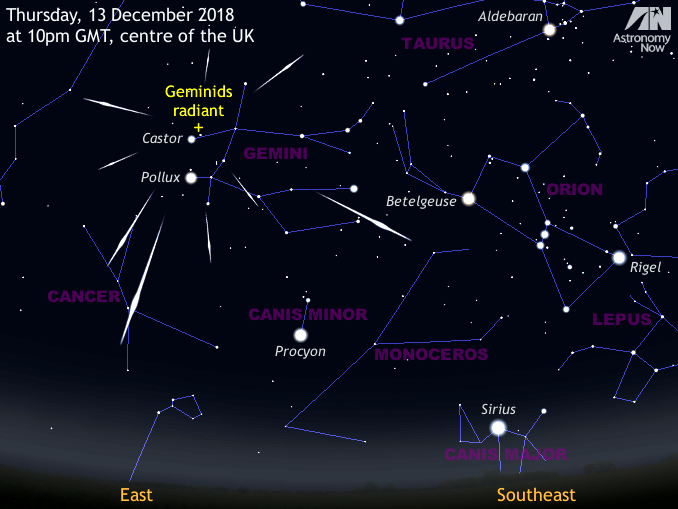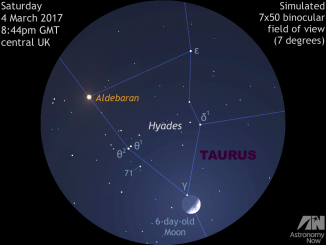
Visual appearance
Under optimal conditions away from sources of urban light pollution and moonlight, you could conceivably up to a hundred shooting stars per hour at the time of peak activity. The Geminid shower offers a high proportion of bright naked-eye events, but these slow-moving meteors don’t tend to leave persistent trains like the August Perseids. The Geminids originate from debris shed by the mysterious crumbly “rock comet” 3200 Phaethon.
When to see the most meteors
The Geminid radiant (the region of sky where the shooting stars appear to originate) lies near Castor in the constellation of Gemini, the upper star of the celestial twins for Northern Hemisphere observers. It rises in the northeast as darkness falls in northern temperate latitudes and lies highest in the southern sky around 2am local time. The radiant remains above the horizon throughout the hours of darkness in the UK. But even from the Southern Hemisphere, where the radiant rises around local midnight, observers can still expect to see several bright events.
If you can stay up, the brighter meteors tend to peak around midnight because we are then facing the direction the Earth is moving in its orbit and the relative speed of particles entering our atmosphere is greatest. For observers in the British Isles, astronomical twilight fades to dark around 6pm GMT on 13 December and moonset occurs close to 10pm GMT.
How to see the most meteors
The faintest meteors are the most plentiful, so to maximise your chances you should find a safe location that is as far removed from streetlights and other sources of light pollution as you can and allow at least 20 minutes for your eyes to become fully dark adapted. Northern Hemisphere observers should ensure that they are dressed in multiple layers of clothing with warm boots or shoes, gloves and a hat since a large proportion of heat is otherwise lost through the head.
A thermos flask of your favourite hot beverage and a reclining chair is a good idea as you’ll be still for long periods during your vigil. Observing in company is always more fun too! Don’t concentrate on the radiant but at a point about 40 degrees (or twice the span of an outstretched hand at arm’s length) to one side of it and about half way from the horizon to overhead. And if you have a pair of binoculars, you can have a look at Comet 46P/Wirtanen currently putting on a good show in Taurus.



